The IPC Changes Definition of "Famine" Until the Numbers Fit the Propaganda
How the IPC moved the goalposts to keep Gaza in ‘crisis’ mode.
On July 29, the U.N.-affiliated Integrated Food Security Phase Classification (IPC) declared that a “worst-case scenario of famine” was “currently playing out” in Gaza. Within hours, major media outlets—The New York Times, NPR, CNN, ABC News—ran with the claim, pinning blame on “months of severe aid restrictions imposed by Israel.” All while nearly 90% of aid handled by the UN never arriving it’s intended destination.
But beneath the headlines, something else happened—something the IPC hoped nobody would notice, but the Washington Free Beacon did. The IPC quietly rewrote the rules for declaring famine, applying new, looser standards only to Gaza.
Traditionally, the IPC’s famine declarations rely on a very specific metric: one of them, 30% of children suffering from acute malnutrition as measured by weight-for-height data. This is burdensome to collect, but it’s reliable, internationally recognized, and has been used in famine determinations around the world
The July Gaza report did something unprecedented:
It swapped weight/height measurement for a far less precise method—mid-upper arm circumference (MUAC) without other required metrics when using MUAC.
It allowed for famine classification without the other, usual confirming indicators, citing vague “evidence of rapidly worsening underlying drivers.”
This is not a minor methodological tweak—it is changing the definition of famine to make Gaza fit it.
At the time of the release, Mordechai (Mike) Wagenheim, New York correspondent for i24, asked the UN on why we should be trusting this new report considering the fact that previous ones had to be revised due to incomplete data and inaccuracies.
This is how this coordinated disinformation campaign works:
Lower the standards for declaring a crisis.
Use selective or unverifiable data from politically aligned actors.
Get major media outlets to repeat the findings without explaining the methodology shift.
Frame the story to align with political objectives—in this case, painting Israel as the cause of “famine across most of Gaza.”
The IPC’s latest Gaza assessment mirrors the same cynical redefinition game we’ve seen with the crime of “genocide” from Amnesty International, Ireland, and most recently B’Tselem—stretching and distorting established terms until they fit a predetermined political narrative. The abuse of “genocide,” is not a neutral shift in language—it’s a deliberate erosion of standards to frame Israel for crimes it has not committed, turning definitions into tools of propaganda.
MUAC is a quick screening tool—useful in emergencies, but never intended to replace full anthropometric surveys for official famine declarations. Even IPC’s own technical manual states that MUAC is not a primary famine indicator. Yet in Gaza, the IPC used MUAC data to claim famine conditions in three cities, even though two of them showed less than 8% acute malnutrition—far below the old 30% threshold.
The decision was literally footnoted—an asterisk under “When is Famine Classified?” that would escape most readers. But to those familiar with the aid sector, it’s a smoking gun. As one veteran practitioner told the Free Beacon:
“This is lowering the bar, making it more possible to declare whatever it is they’re going to declare.”
The IPC’s numbers for “over 20,000 children admitted for acute malnutrition” and “at least 16 hunger-related deaths” rely on “internal documents” from undisclosed sources—many of them linked to the Hamas-run Gaza Health Ministry or NGOs accused of operating as Hamas fronts. This means the core claims driving international outrage and policy pressure rest on unverifiable data supplied by parties with an obvious interest in inflating the crisis narrative.
The IPC has never before altered its famine criteria this way anywhere in the world. Only Gaza gets the special treatment. And the timing—amid an international campaign to isolate Israel—should tell you exactly what’s going on.
Reported by AI researcher Mark Zlochin, Amnesty International’s July 7 report on Gaza unintentionally undermines the widespread “famine” narrative. Citing Gaza Ministry of Health data, it records a 2024 under-five mortality rate of 32.7 per 1,000 live births—equivalent to 0.18 deaths per 10,000 children per day.
This figure is nearly six times lower than the Integrated Food Security Phase Classification (IPC) threshold for even a Phase 3 “Crisis” classification, placing Gaza firmly in Phase 1–2 (“Minimal” or “Stressed”) territory for under-five mortality. These numbers sharply contradict months of media and NGO claims of an ongoing famine or near-famine emergency.
Richard Goldberg from FDD, told the Free Beacon the IPC standards are another example of U.N. malfeasance.
"If you keep pulling the thread here, you start to understand this is one of the greatest frauds ever perpetrated on the world, There is no famine in Gaza—the data thresholds don’t support that claim—and yet we have the United Nations changing the rules to fit the desired political outcome."
A famine declaration is not just a humanitarian statement—it is a political weapon. And the IPC has just shown it is willing to reforge that weapon to fit the needs of the anti-Israel narrative.


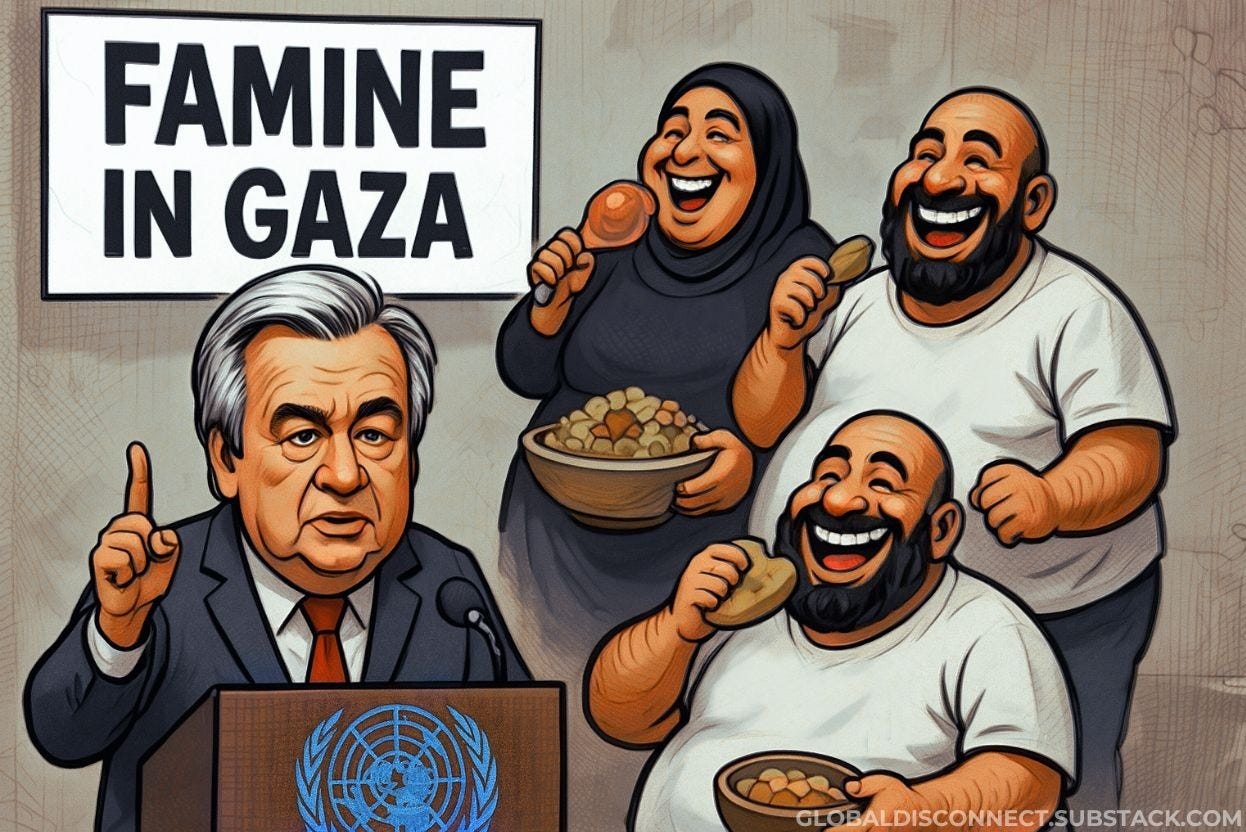
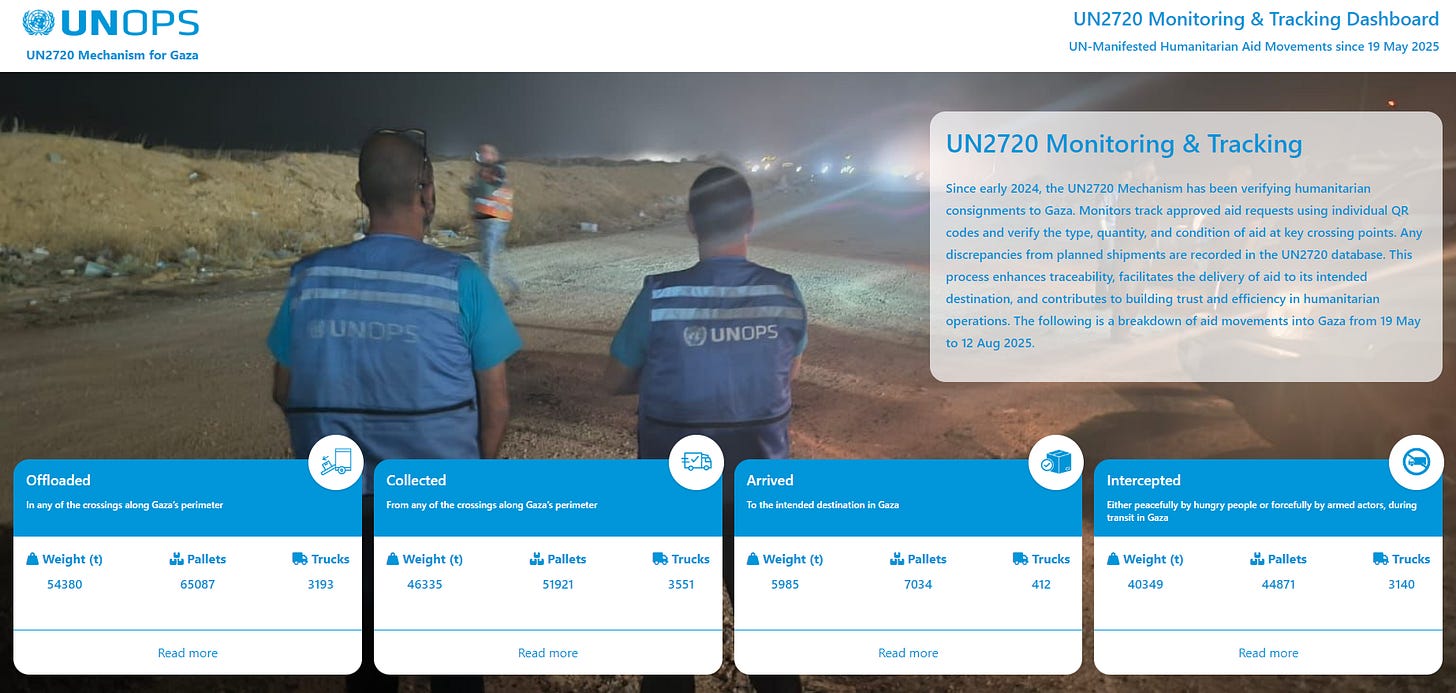
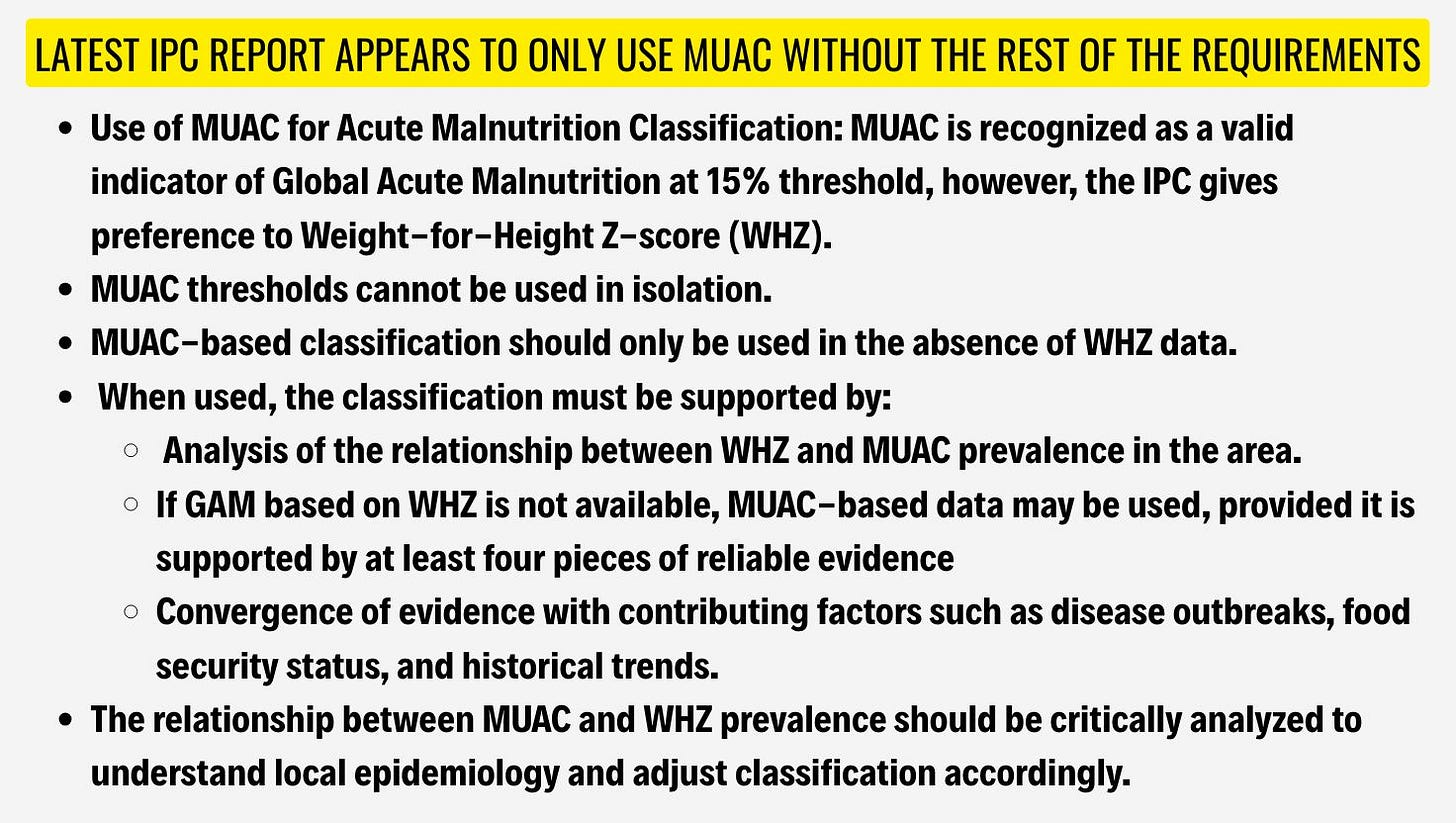
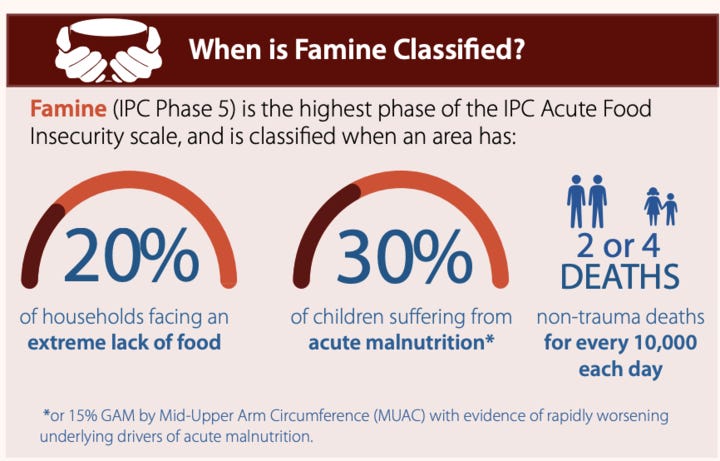
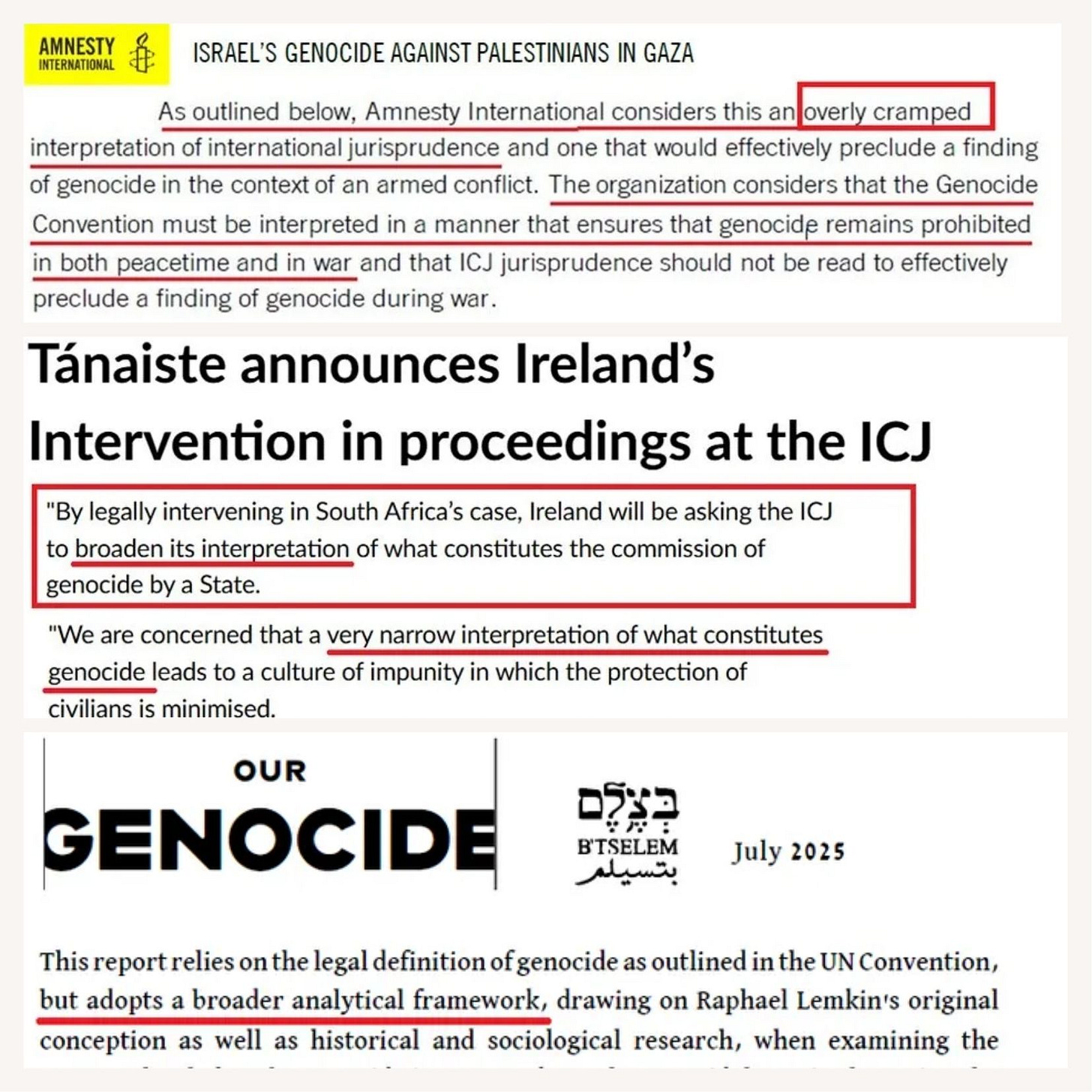
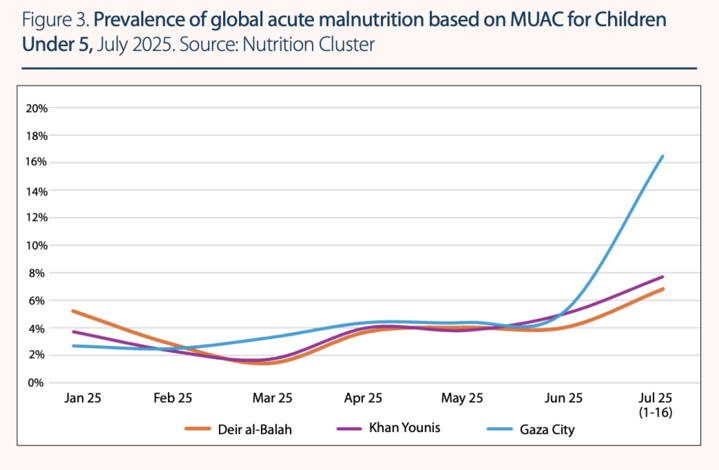

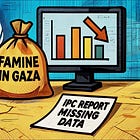

They changed the definition for gender,pandemic genocide and famine gaslighting on a grand scale and the world supplicates to guzzle it
Lazy freeloading Muslims.